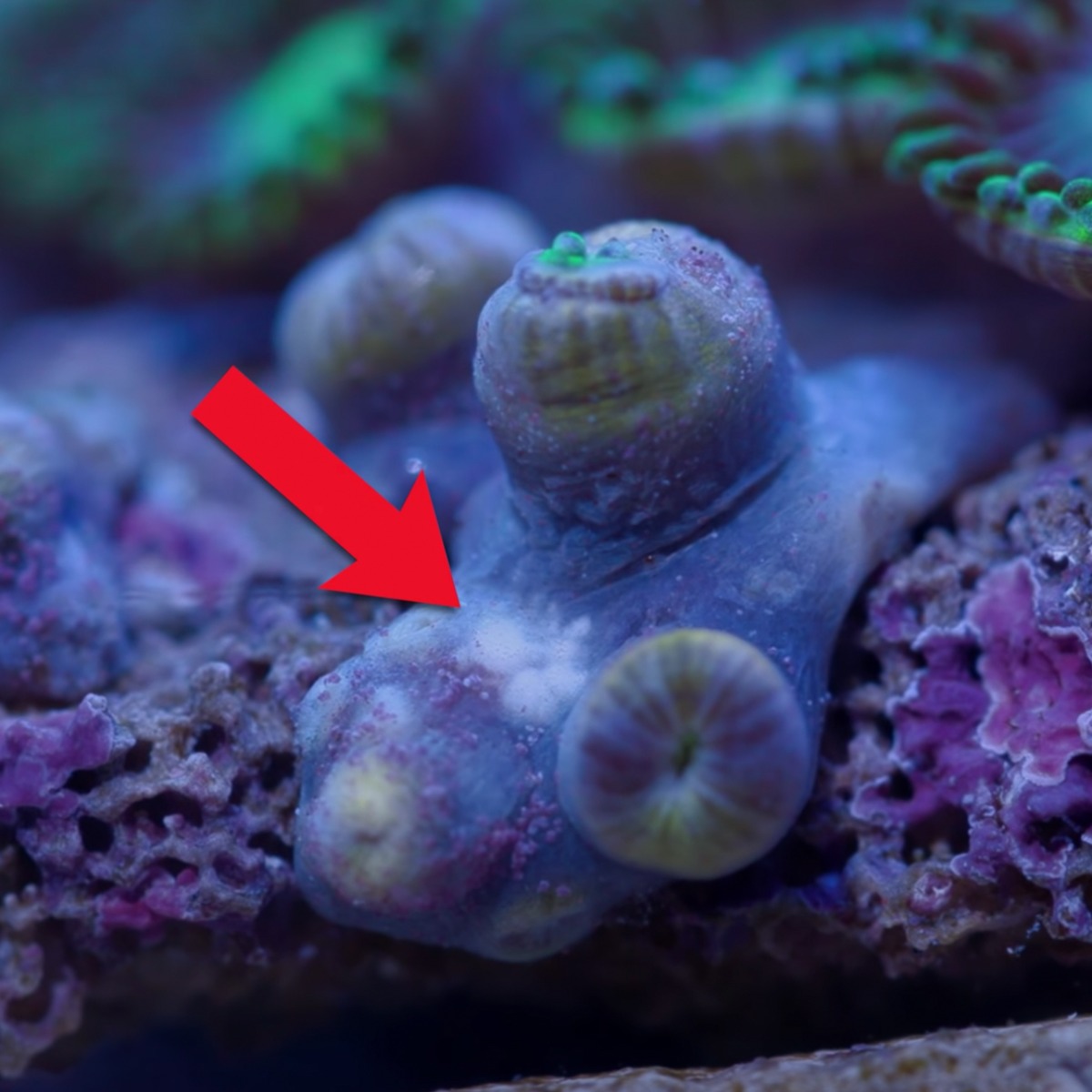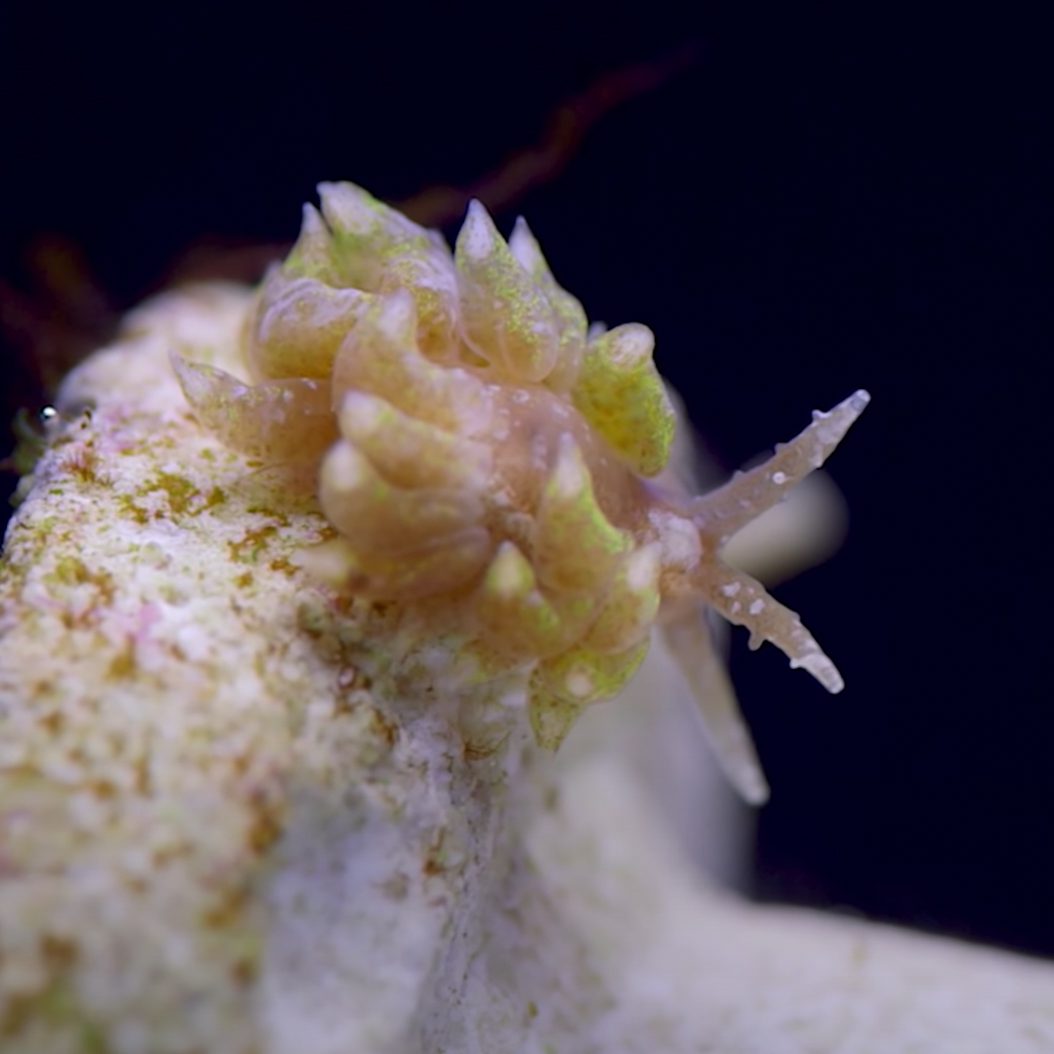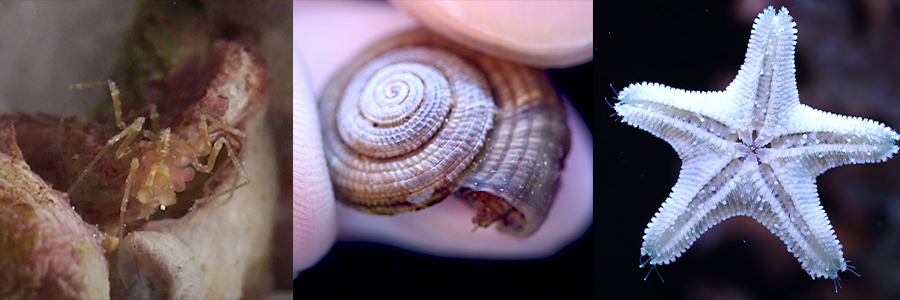Filter
My Wish List
![]() Zoanthus Troubleshooting Guide
Zoanthus Troubleshooting Guide
I often get asked if zoanthus are a good choice for beginners, and the simple answer to that is “Yes” but it’s a little bit loaded. When things are going well, zoas are really easy to keep. They are fast growing, and generally speaking are easy to manage. They aren’t exactly a high maintenance coral.
However, there are plenty of situations where things aren’t going very well. Even though zoas are very beginner friendly, they can struggle from a lot of issues. For instance, certain more challenging corals like Acropora, struggle from certain issues, but not a lot of issues. They might struggle with Rapid Tissue Necrosis (RTN), Slow Tissue Necrosis (STN), they might down color from a certain stress like lighting, that sort of thing. They might also have a pest issue, like flatworms or red bugs. There aren’t a plethora of issues when it comes to those types of corals, but when it comes to zoas, there’s just a lot of things that like to mess with zoas for some reason.
This blog is meant to go over those issues and how you can go about treating them, because these things are not difficult to manage, but I think folks that are trying zoas for the first time might find it to be a frustrating process when they keep running into these stumbling blocks.
![]() Shipping Stress
Shipping Stress
Lately most people have started opting for purchasing their corals online, as opposed to shopping at their local fish store like they would have in the past. One of the issues to purchasing corals online can be shipping stress related, especially if you live in an area that is particularly hot during the summer time, or a particularly cold region during the winter time. Shipping stress is usually from these temperature differences.
This is also totally excluding any shipping delays, which could totally happen. The worst situation we ever encountered was a ten-day delay, which is a super big problem. Miraculously, the corals that we shipped were still somehow alive. After the first 48 hours, things normally don’t turn out so great. Assuming that the shipment does arrive on time, and relatively un-damaged, you can still get shipping related stress that is mainly tied to temperature.
When it comes to zoas, what normally happens in terms of shipping stress is they will just refuse to open, and it can be super concerning for the customer. Chances are it’ll be just fine, but sometimes that initial shock will prevent them from opening for weeks in some cases.
There isn’t a whole lot that you can do about it, they just have to settle in. When that happens to our customers we will usually just send a replacement out and tell them, “Don’t discard that coral, it will likely open up eventually.” But it can take a long time, and that extends to their growth rate as well. We’ve had certain colonies that didn’t start growing for a good 12 months because of this initial shock. So be prepared for this if you want to go with the option of purchasing corals online.

Zoa Pox
![]() Zoa Pox
Zoa Pox
There are certain diseases that can afflict zoas. The one that is most common is referred to as Zoa Pox. They look like these little white pimples on the flesh of the zoa. These usually come in on wild colonies, but it can also come on colonies that perhaps didn’t receive enough flow. Without enough flow, lots of detritus can settle on these corals and can irritate it and cause this infection.
In the past, what we would use to treat Zoa Pox would be to use a fish medication called Furan-2, and it worked for the most part. However, from what I hear these days, Furan-2 isn’t really being sold or manufactured, or maybe it’s just banned outright for some odd reason. So if this isn’t something you already have in your arsenal, there’s a few other ways to combat Zoa Pox. One way is to take some stainless steel wood carving tools and individually “pop” those zits and then just rinse them away. As long as you keep those zoas clean going forward, you won’t have another issue with Zoa Pox.
Another thing you can do if you aren’t comfortable doing dips and/or don’t want to go about popping all those little zits, you could just eliminate the root cause of the pox and just blast your Zoanthids with flow to dislodge all that irritating detritus. After doing that, over time the coral will probably be fine, it’s very uncommon for Zoa Pox to actually kill an entire colony of zoas.
![]() Zoa-Eating Nudibranchs
Zoa-Eating Nudibranchs
Next, let’s talk about some of these pests. The most concerning pest that we run into are Zoa-Eating Nudibranchs. Nudibranchs in general are really difficult because unlike other pests, these guys don’t mind traveling off the coral.

Zoa-Eating Nudibranch
Also, the nudibranchs lay eggs that are extremely resistant to just about everything. They don’t care about dips, they don’t care about physical removal, and that causes this recurrence.
Having said that, Zoa-Eating Nudibranchs, out of all the nudibranchs out there, are the easiest to deal with. The most difficult are the nudibranchs that often plague montipora, those are incredibly tricky to get rid of, but if you keep at trying to get rid of the adult nudibranchs, you’ll eventually get rid of them.
So how do you know you have these nudibranchs? For starters, look at see if you have any polyps that are closed all the time, this is usually a sign that something is wrong. The real sign that you have nudibranchs is if you go ahead and cause all your polyps to close by blasting them with a little bit of water, and you still have polyps that are perfectly open, those are likely nudibranchs. The nudibranchs, by eating the zoa, will take on the coloration of that zoa, and the little spokes on their back kinda look like the tentacles of a polyp.
What we usually do, as far as dips go, are the pine oil based dips. These include dips like Revive and Coral RX, and they work pretty well when it comes to dislodging the nudibranchs.
Also, having some wrasse predation could help as well. Wrasses, in my experience, are actually pretty frustrating, because a lot of the time they will eat the good nudibranchs such as Berghia Nudibranchs that eat aiptasia. Luckily, Wrasses like the Six Line, Leopard, and Melanarus do eat Zoa-Eating Nudibranchs, so give that a shot and see if it helps.
![]() Sea Spiders
Sea Spiders
Although not very common, another pest that afflicts zoas are sea spiders. They look like the face huggers from the Aliens movies. They typically only come on fresh wild cut colonies. Normally when it comes to Zoanthus, colonies fresh out of the ocean will have most if not all of these pests. It is very uncommon for one of these corals to spend a long time in captivity and still have sea spiders. If you’re getting your corals from an aquacultured source, it’s incredibly unlikely that you will get sea spiders.
However, if you do have sea spiders, they are a little more concerning because they will kill an entire colony of zoas. To get rid of them, the pine oil dips mentioned previously work really well on sea spiders. If you wanted to be hyper-aggressive about it, you could, with immense caution, fresh water dip your zoas. This is only something that I would recommend for advanced reefers. Unlike most other corals, fresh water dipping of zoas can be done, it is just very harsh to do. I would only dip them for 5-10 minutes maximum.
![]() Sundial Snails
Sundial Snails
The next pest on this list are sundial snails. These are snails that, for the most part, only come on wild colonies. They are pretty exclusive to just zoanthus corals, I rarely see them on anything else. If you see them all you have to do is grab them and chuck them out of there. This is where inspection really goes a long way when you first receive your zoas. Give them a dip and make sure to thoroughly look them over for any pests.
Again, if you’re buying frags from an aquacultured source, it’s very unlikely you will see this pest, but if you’re buying full colonies, be on the lookout for these types of issues.
![]() Asterina Starfish
Asterina Starfish
There are a lot of varieties of this type of starfish. Most of them are harmless, but most people don’t like them because they reproduce quickly and show up on the glass, blocking the view. Biologically they are also harmless because they just feed off of film and stuff like that.
However, there are some varieties, typically larger and more brown in color whereas most of the other kinds are white, that will just latch onto certain kinds of corals and eat them. Usually I see them on certain types of SPS corals like Pocillopora and Stylophora, but I have also seen them climb on top of and eat zoa polyps.
Again, you may see this starfish behavior that is fairly innocuous and they are just looking for that film, but I have definitely seen some monster starfish that have eaten a polyp or two.
Any dip will remove this starfish, and physical removal is also pretty easy.

Left to Right: Sea Spider, Sundial Snail, Asterina Starfish
![]() Film Algae
Film Algae
I kind of glossed over the fact that the starfish was trying to eat this type of algae. Film algae can cause zoa polyps to stop opening. Usually what happens is the polyps will start making a waxy film and then over time shed off that layer of film to dislodge any algae that may be growing on it. Occasionally there are types of film algae that attach themselves to zoas and prevent them from shedding off that wax coat.
In this situation what I like to do is three things: first is addressing the issue that is causing the film algae to begin with. There is a chance that you have a phosphate issue in the tank to begin with and that could be feeding this algae and keep it growing. So do a couple water changes, perhaps run a bit of GFO (be careful as this can be pretty aggressive).
The next thing is to physically remove the film algae. The best way to go about that is to get a clean makeup brush or a very fine paint brush and use that to gently brush away that film algae. This will also help with breaking up that wax coating and getting that off the coral as well. Once you get that off, the polyp can now open and you’re all good.
Lastly, to prevent the film algae from coming back, point a little bit more flow into that direction of the tank.
![]() Reef-Safe Animals
Reef-Safe Animals
We’ve gone over plenty of things that are pests, but what we haven’t discussed are the non-pest animals that can still wreak havoc on zoanthus corals. I’m not talking about a Butterfly fish that might not be reef-safe, or an Angelfish that might not be reef-safe. There are plenty of animals that are considered reef-safe that will still happily take a nibble out of a single zoa polyp. For example, Tangs and Fox Faces will do this.
If there’s an entire colony of zoas, no problem. The issue comes when someone is buying one single polyp of an expensive zoa. That Fox Face will have no problem coming over and taking that exploratory nibble and it’s just gone.
It’s the weirdest behavior and very uncommon for these fish to do this regularly, but I think it’s just the novelty of a new thing being placed in the tank. So if you’re placing a frag with one or even two polyps into your tank, they could be in danger. In that case I would recommend a protective cover that you could place over the coral, or just avoid single polyps in general.
I usually avoid making that purchase right off the bat due to the risk involved. There’s a big difference between having a single polyp, and having 3 or 4 polyps. 3 or 4 polyp frags are not likely to be harassed by these fish.
![]() Hermit Crabs
Hermit Crabs
Similarly, here at Tidal Gardens, we try to avoid any and all types of these crabs, but if you do have Hermit Crabs in your tank as a part of your clean up crew, just be careful with any smaller zoa colonies that you may be introducing. This is especially true for single polyp zoas, which again, are not recommended. So keep an eye on these omnivores, they like to cause trouble.
Alright guys, that was my Zoanthus Troubleshooting Guide. Hopefully I covered most of the big offenders, and that this prevented some big headaches that you may have had in the past when caring for your tanks.
Until next time, Happy Reefing.
